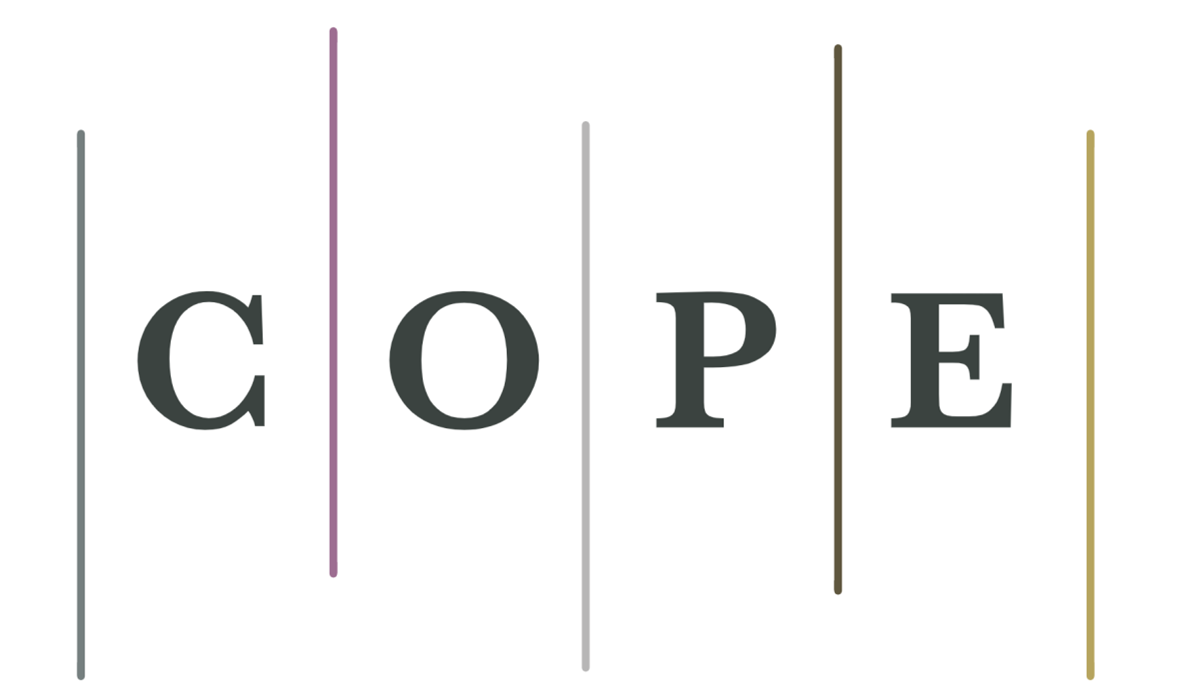Systematic Review of Image Segmentation Programs in Craniomaxillofacial Surgery
DOI:
https://doi.org/10.22153/kej.2025.11.001Keywords:
Image segmentation; Craniomaxillofacial surgery; Surgical planning; Segmentation programs; medical imaging; Computer-aided surgery; Image analysis; Surgical navigationAbstract
Image segmentation has a significant role in the virtual planning, execution, and evaluation of craniomaxillofacial (CMF) surgical procedures. This systematic review aims to evaluate and compare the image segmentation programs frequently used in the field of CMF surgery. A precise search strategy was employed to recognise suitable studies across several databases, using specific inclusion criteria and keywords. Various image segmentation programs that use different techniques, including thresholding, edge-based methods, region-based methods and machine learning-based methods, were investigated. Results were screened through Preferred Reporting Items for Systematic Reviews and Meta-Analyses. A total of 94 reports on the use of virtual surgical planning from January 1, 2014, to June 1, 2023, were obtained. The identified image segmentation programs were analysed, including factors such as program features, strengths, limitations, supported image modalities, and clinical applications. A qualified assessment of these programs was conducted on the basis of parameters such as segmentation accuracy, processing speed, robustness, user-friendliness and integration capabilities. The review also addresses challenges faced by current segmentation programs and outlines future directions for advancement, including the standardised validation metrics and the integration of artificial intelligence. Surgical procedures were assigned into seven categories for analysis: cranial reconstructions, facial rejuvenation, orthognathic surgery, trauma repair, tumour resection, cleft lip and palate and patient specific implant. Amongst the software that could be used for bone segmentation in CMF region, eight software programs are most frequently used. Results showed that the Materialise suite was the most widespread tool for bone segmentation programs, with a prevalence of 50%, followed by the 3D slicer. This review underlines the principal significance of image segmentation in CMF surgery and offers valuable insights for clinicians and researchers to make informed decisions regarding the selection and utilisation of image segmentation programs.
Downloads
References
[1] A. Tel et al., “Current trends in the development and use of personalized implants: engineering concepts and regulation perspectives for the contemporary oral and maxillofacial surgeon,” Applied Sciences, vol. 11, no. 24, p. 11694, Dec. 2021, doi: 10.3390/app112411694.
[2] R. Schmelzeisen, N. ‐c. Gellrich, R. Schoen, R. Gutwald, C. Zizelmann, and A. Schramm, “Navigation-aided reconstruction of medial orbital wall and floor contour in cranio-maxillofacial reconstruction,” Injury-International Journal of the Care of the Injured, vol. 35, no. 10, pp. 955–962, Oct. 2004, doi: 10.1016/j.injury.2004.06.005.
[3] T. S. Oh, W. S. Jeong, T. J. Chang, K. H. Koh, and J.-W. Choi, “Customized orbital wall reconstruction using Three-Dimensionally Printed rapid Prototype model in patients with orbital wall fracture,” Journal of Craniofacial Surgery, vol.27, no. 8, pp. 2020–2024, Nov. 2016, doi: 10.1097/scs.0000000000003195.
[4] S. Sembronio, A. Tel, and M. Robiony, “Protocol for fully digital and customized management of concomitant temporomandibular joint replacement and orthognathic surgery,” International Journal of Oral and Maxillofacial Surgery, vol. 50, no. 2, pp. 212–219,Feb. 2021, doi: 10.1016/j.ijom.2020.04.004.
[5] A. Tel, F. Tuniz, S. Fabbro, S. Sembronio, F. Costa, and M. Robiony, “Computer-Guided In-House Cranioplasty: Establishing a novel standard for cranial reconstruction and proposal of an updated protocol,” Journal of Oral and Maxillofacial Surgery, vol. 78, no. 12, p. 2297.e1-2297.e16, Dec. 2020, doi: 10.1016/j.joms.2020.08.007.
[6] D. Steybe et al., “Automated segmentation of head CT scans for computer-assisted craniomaxillofacial surgery applying a hierarchical patch-based stack of convolutional neural networks,” International Journal of Computer Assisted Radiology and Surgery, vol. 17, no.11,pp.2093–2101,Jun. 2022, doi: 10.1007/s11548-022-02673-5.
[7] M. Longeac, A. Depeyre, B. Pereira, I. Barthélémy, and N. P. Dang, “Virtual surgical planning and three-dimensional printing for the treatment of comminuted zygomaticomaxillary complex fracture,” Journal of Stomatology, Oral and Maxillofacial Surgery, vol. 122, no. 4, pp. 386–390, Sep. 2021, doi: 10.1016/j.jormas.2020.05.009.
[8] T. F. Cootes, A. Hill, C. J. Taylor, and J. Haslam, “The use of active shape models for locating structures in medical images,” in Springer eBooks, 2005, pp. 33–47. doi: 10.1007/bfb0013779.
[9] [9] A. Tel, L. Arboit, M. De Martino, M. Isola, S. Sembronio, and M. Robiony, “Systematic review of the software used for virtual surgical planning in craniomaxillofacial surgery over the last decade,” International Journal of Oral and Maxillofacial Surgery, vol. 52, no. 7, pp. 775–786, Jul. 2023, doi: 10.1016/j.ijom.2022.11.011.
[10] [10]M. Longeac, A. Depeyre, B. Pereira, I. Barthélémy, and N. P. Dang, “Virtual surgical planning and three-dimensional printing for the treatment of comminuted zygomaticomaxillary complex fracture,” Journal of Stomatology, Oral and Maxillofacial Surgery, vol. 122, no. 4, pp. 386–390, Sep. 2021, doi: 10.1016/j.jormas.2020.05.009.
[11] [11] H. Kim et al., “Three-dimensional orbital wall modeling using paranasal sinus segmentation,” Journal of Cranio-Maxillofacial Surgery, vol. 47, no. 6,pp.959967,Jun.2019,doi:10.1016/j.jcms.2019.03.028.
[12] [12] R. C. W. Goh, C. N. Chang, C. L. Lin, and L. J. Lo, “Customised fabricated implants after previous failed cranioplasty,” Journal of Plastic, Reconstructive & Aesthetic Surgery, vol. 63, no. 9, pp.14791484,Sep.2010,doi:10.1016/j.bjps.2009.08.010.
[13] [13] A. M. ‐l. Wong, M. S. Goonewardene, B. Allan, A. Mian, and A. Rea, “Accuracy of maxillary repositioning surgery using CAD/CAM customized surgical guides and fixation plates,” International Journal of Oral and Maxillofacial Surgery, vol. 50, no. 4,pp.494500,Apr.2021,doi:10.1016/j.ijom.2020.08.009.
[14] [14] F. Goormans et al., “Accuracy of computer-assisted mandibular reconstructions with free fibula flap: Results of a single-center series,” Oral Oncology, vol. 97, pp. 69–75, Oct. 2019, doi: 10.1016/j.oraloncology.2019.07.022.
[15] J. Varghese and J. S. Saleema, “Review on Segmentation of Facial Bone Surface from Craniofacial CT Images,” in Lecture notes on data engineering and communications technologies, 2022, pp. 717–738. doi: 10.1007/978-981-19-0898-9_55.
[16] S. Pare, A. Kumar, G. K. Singh, and V. Bajaj, “Image Segmentation using Multilevel Thresholding: A research review,” Iranian Journal of Science and Technology, Transactions of Electrical Engineering, vol. 44, no. 1, pp. 1–29, Aug. 2019, doi: 10.1007/s40998-019-00251-1.
[17] X. Lin et al., “Micro–Computed Tomography–Guided artificial intelligence for pulp cavity and tooth segmentation on cone-beam computed tomography,” Journal of Endodontics, vol. 47, no. 12, pp. 1933–1941, Dec. 2021, doi: 10.1016/j.joen.2021.09.001.
[18] K. Ramesh, G. Kumar, K. Swapna, D. Datta, and S. D. S. Rajest, “A review of Medical Image Segmentation Algorithms,” EAI Endorsed Transactions on Pervasive Health and Technology, p. 169184,Jul.2018, doi:10.4108/eai.12-4-2021.169184.
[19] I. Qureshi et al., “Medical image segmentation using deep semantic-based methods: A review of techniques, applications and emerging trends,” Information Fusion, vol. 90, pp. 316–352, Feb. 2023, doi:10.1016/j.inffus.2022.09.031.
[20] B. Chen, L. Zhang, H. Chen, K. Liang, and X. Chen, “A novel extended Kalman filter with support vector machine-based method for the automatic diagnosis and segmentation of brain tumors,” Computer Methods and Programs in Biomedicine, vol. 200, p. 105797, Mar. 2021, doi: 10.1016/j.cmpb.2020.105797.
[21] F. Abdolali, R. A. Zoroofi, Y. Otake, and Y. Sato, “A novel image-based retrieval system for characterization of maxillofacial lesions in cone beam CT images,” International Journal of Computer Assisted Radiology and Surgery, vol. 14, no. 5, pp. 785–796, Mar. 2019, doi: 10.1007/s11548-019-01946-w.
[22] P. Roongruangsilp and P. Khongkhunthian, “The Learning Curve of Artificial Intelligence for Dental Implant Treatment Planning: A Descriptive Study,” Applied Sciences, vol. 11, no. 21, p. 10159, Oct. 2021, doi: 10.3390/app112110159.
[23] K. Slim, É. Nini, D. Forestier, F. Kwiatkowski, Y. Panís, and J. Chipponi, “Methodological index for non‐randomized studies (MINORS): development and validation of a new instrument,” ANZ Journal of Surgery, vol. 73, no. 9, pp. 712–716, Sep. 2003, doi: 10.1046/j.1445-2197.2003.02748.x.
[24] A. Lo Giudice et al., “One Step before 3D Printing—Evaluation of Imaging Software Accuracy for 3-Dimensional Analysis of the Mandible: A Comparative Study Using a Surface-to-Surface Matching Technique,” Materials, vol. 13, no. 12, p. 2798, Jun. 2020, doi: 10.3390/ma13122798.
[25] M. Zhao et al., “Craniomaxillofacial Bony Structures Segmentation from MRI with Deep-Supervision Adversarial Learning,” in Lecture Notes in Computer Science, 2018, pp. 720–727. doi: 10.1007/978-3-030-00937-3_82.
[26] B, K., & M, V. (2019). Edge based segmentation in medical images. International Journal of Engineering and Advanced Technology, 9(1), 449–451. https://doi.org/10.35940/ijeat.a9484.109119
[27] F. Gremse, M. Stärk, J. Ehling, J. Menzel, and T. Lammers, “Imalytics Preclinical: Interactive Analysis of Biomedical Volume data,” Theranostics, vol. 6, no. 3, pp. 328–341, Jan. 2016, doi: 10.7150/thno.13624.
[28] F. Greco, R. Salgado, W. Van Hecke, R. Del Buono, P. M. Parizel, and C. A. Mallio, “Epicardial and pericardial fat analysis on CT images and artificial intelligence: a literature review,” Quantitative Imaging in Medicine and Surgery, vol. 12, no. 3, pp. 2075–2089, Mar. 2022, doi: 10.21037/qims-21-945.
[29] F. Gelaude, J. V. Sloten, and B. Lauwers, “Accuracy assessment of CT-based outer surface femur meshes,” Computer Aided Surgery, vol. 13, no. 4,pp.188199,Jan.2008,doi:10.3109/10929080802195783.
[30] I. Nyström, J. Nysjö, A. Thor, and F. Malmberg, “BoneSplit - a 3D painting tool for interactive bone segmentation in CT images,” in Communications in computer and information science, 2017, pp. 3–13. doi: 10.1007/978-3-319-54220-1_1.
[31] M. E. Elbashti, A. M. Aswehlee, C. T. Nguyen, B. Ella, and A. Naveau, “Technical Protocol for Presenting Maxillofacial Prosthetics Concepts to Dental Students using Interactive 3D Virtual Models within a Portable Document Format,” Journal of Prosthodontics, vol. 29, no. 6, pp. 546–549, Jun. 2020, doi: 10.1111/jopr.13210.
[32] J. Zhang et al., “Context-guided fully convolutional networks for joint craniomaxillofacial bone segmentation and landmark digitization,” Medical Image Analysis, vol. 60, p. 101621, Feb. 2020, doi: 10.1016/j.media.2019.101621.
[33] N. V. Shree and T. N. R. Kumar, “Identification and classification of brain tumor MRI images with feature extraction using DWT and probabilistic neural network,” Brain Informatics, vol. 5, no. 1, pp. 23–30, Jan. 2018, doi: 10.1007/s40708-017-0075-5.
[34] Y. Kang, X. Shan, L. Zhang, and Z. Cai, “[Postoperative position change of fibular bone after reconstruction of maxillary defect using free fibular flap].,” PubMed, vol. 52, no. 5, pp. 938–942, Oct. 2020, [Online]. Available: https://pubmed.ncbi.nlm.nih.gov/33047733
[35] R. Sasaki and M. Rasse, “Mandibular reconstruction using ProPlan CMF: A review,” Craniomaxillofacial Trauma & Reconstruction Open, vol. 1, no. 1, p. s-1606835, Jan. 2017, doi: 10.1055/s-0037-1606835.
[36] A. S. Ding et al., “A Self‐Configuring deep learning network for segmentation of temporal bone anatomy in Cone‐Beam CT imaging,” Otolaryngology-Head and Neck Surgery, vol. 169, no. 4, pp. 988–998, Mar. 2023, doi: 10.1002/ohn.317.
Downloads
Published
Issue
Section
License
Copyright (c) 2025 Al-Khwarizmi Engineering Journal

This work is licensed under a Creative Commons Attribution 4.0 International License.
Copyright: Open Access authors retain the copyrights of their papers, and all open access articles are distributed under the terms of the Creative Commons Attribution License, which permits unrestricted use, distribution, and reproduction in any medium, provided that the original work is properly cited. The use of general descriptive names, trade names, trademarks, and so forth in this publication, even if not specifically identified, does not imply that these names are not protected by the relevant laws and regulations. While the advice and information in this journal are believed to be true and accurate on the date of its going to press, neither the authors, the editors, nor the publisher can accept any legal responsibility for any errors or omissions that may be made. The publisher makes no warranty, express or implied, with respect to the material contained herein.
















